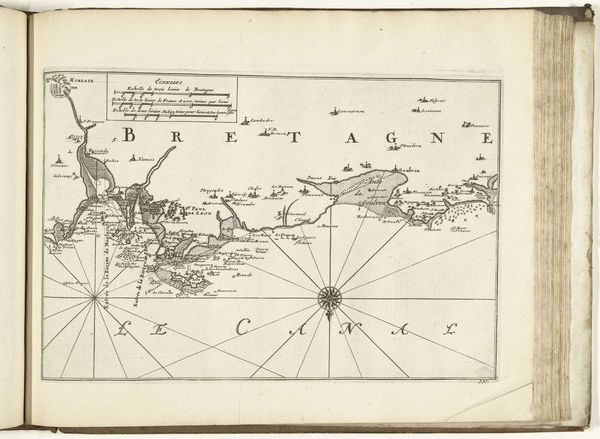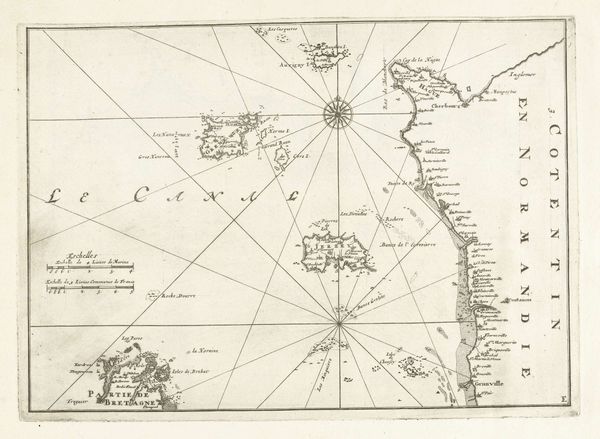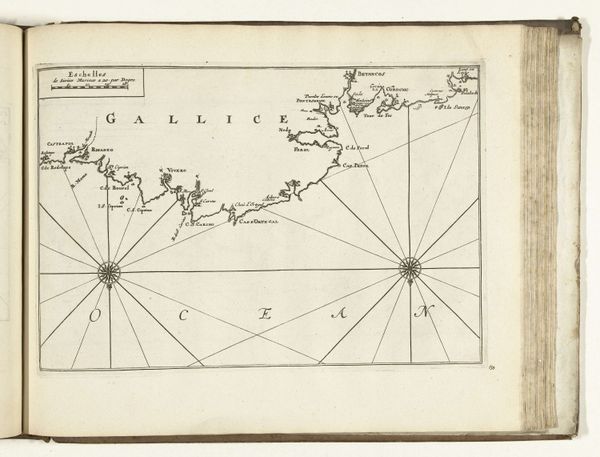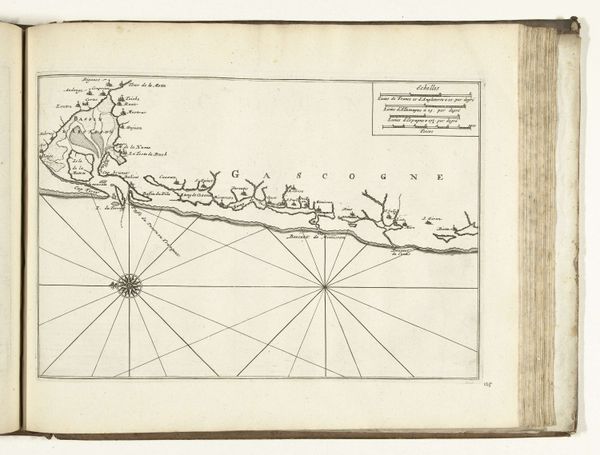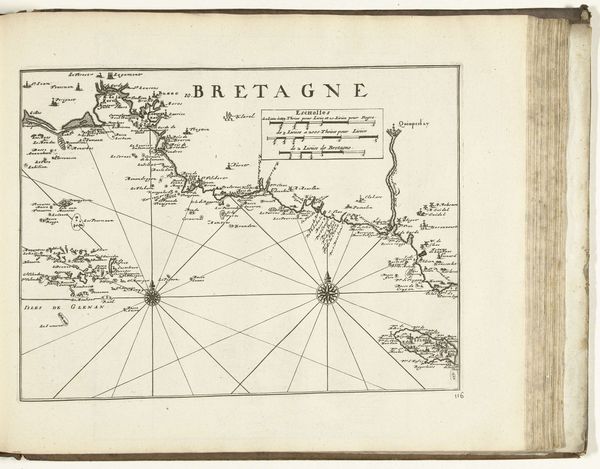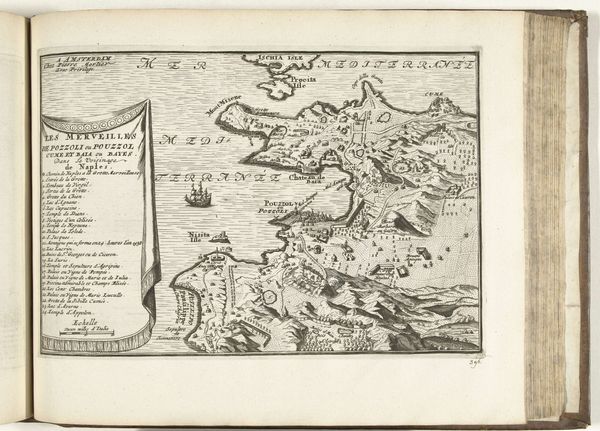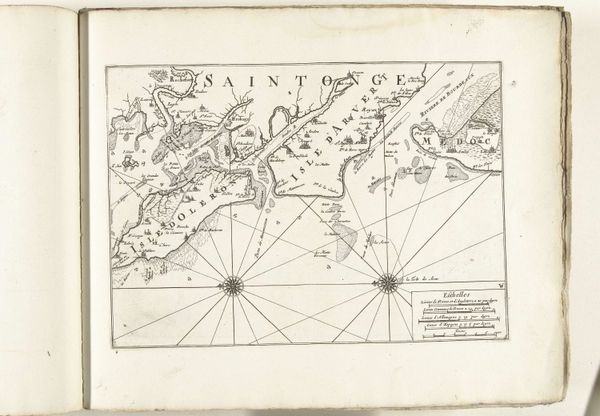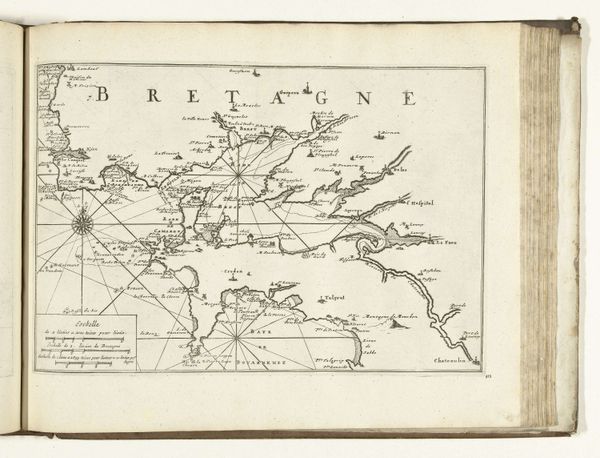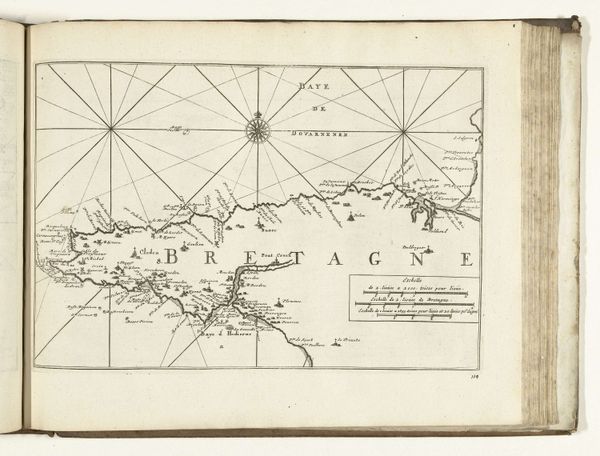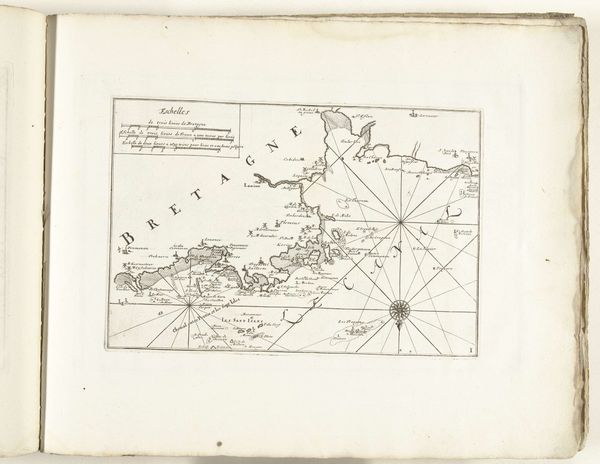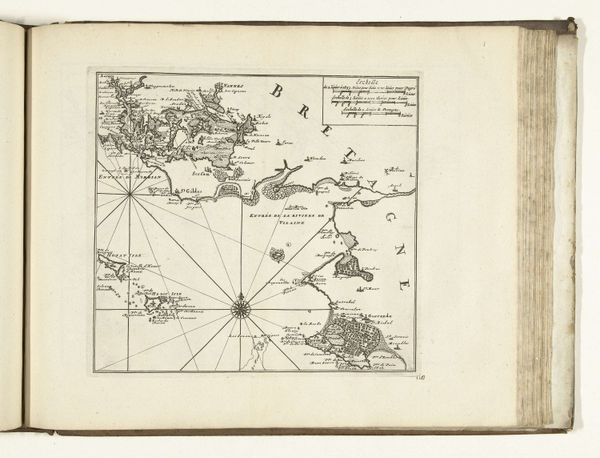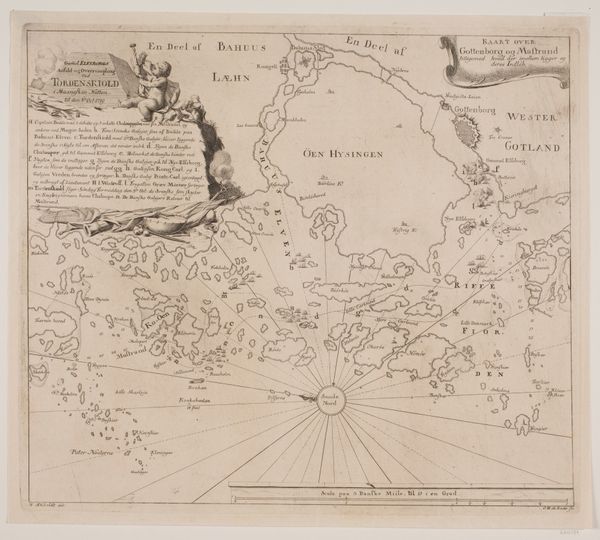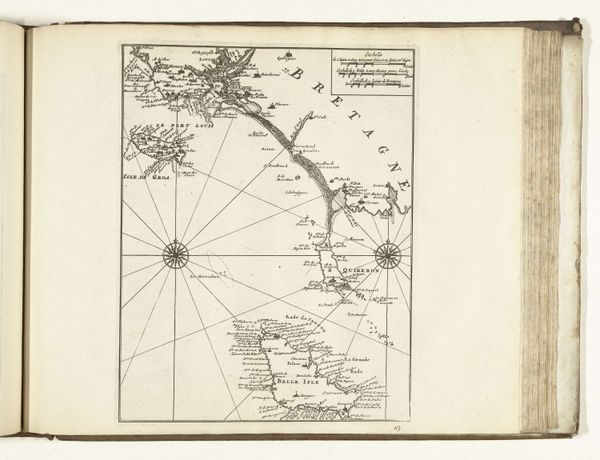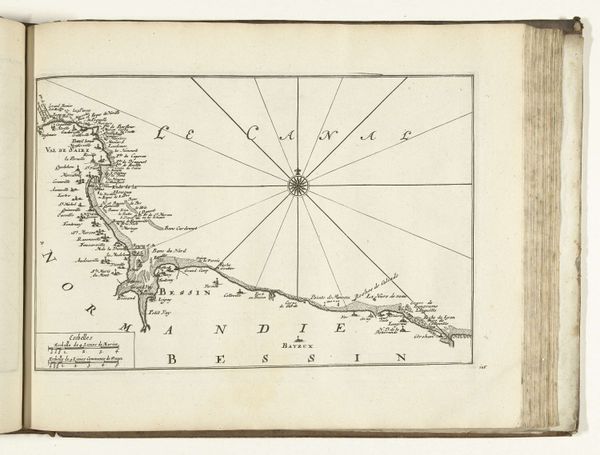
drawing, print, ink, engraving
#
drawing
#
baroque
# print
#
pen sketch
#
landscape
#
ink
#
engraving
Dimensions: height 228 mm, width 330 mm
Copyright: Rijks Museum: Open Domain
Curator: Looking at this, the engraving titled "Kaart van de noordkust van Bretagne, 1726," an anonymous piece from 1726 in the Rijksmuseum, really transports me. It is crafted with ink, so intricate, yet so utilitarian. What stands out for you initially? Editor: I’m immediately struck by the fragility of the map itself. The fine lines of the ink seem so delicate compared to the turbulent sea it depicts, giving a sense of human control imposed on a natural world that remains untamed. Curator: I see what you mean. The act of mapping in this period was tied to social control – power projecting across geographic spaces. It reminds us how geographical knowledge was crucial for trade, military campaigns, and establishing political dominance. Consider the expense put into the printing itself – maps like these were definitely not accessible to the common sailor. Editor: Precisely! And thinking about the production of these maps, there would be extensive labor divisions, from the surveyors plotting the coastlines to the engravers rendering those measurements onto the printing plates. And we shouldn’t ignore distribution, the movement of this finished product—who were the intended consumers of this very detailed representation of Brittany's coastline? Curator: Wealthy merchants, undoubtedly, and government officials who needed up-to-date maritime information. The details, down to each inlet and island, served tangible, exploitative needs. But this also showcases how knowledge production—engraving, in this case—shaped colonial power and control through visual and textual data. The paper is really something to look at, isn’t it? Such detail… Editor: Indeed, and the existence of this very object – the survival of it – now existing in the gallery, reminds us how artworks from the past continuously become repurposed. In its time, this map had real political use, but it is in the museum that this now-historicized item takes on new significance. Curator: A telling object, really. Thinking about materiality reminds us how things connect the hand that produced them, the world they charted, and even how we see and understand them now. Editor: A potent visualization of social forces, from resource extraction to geopolitical strategy, inscribed onto paper.
Comments
No comments
Be the first to comment and join the conversation on the ultimate creative platform.
